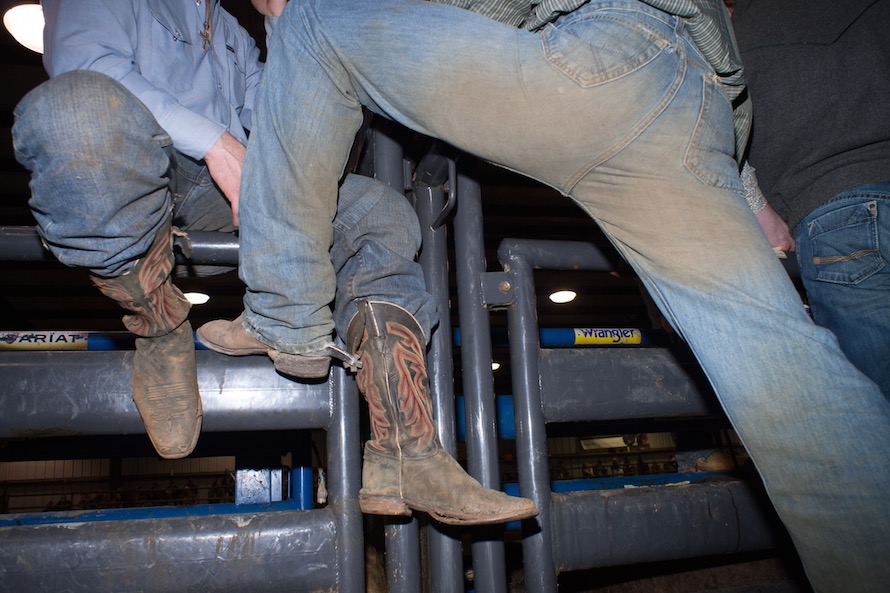Southern Cavaliers
Biker rallies, rodeos, and other loud gatherings in the American South. Watch out for the flaming torches.

Interview by Karolle Rabarison
The Morning News: You’ve worked on several other projects that focus on stories from the South. How does “Cavaliers” stand out in relation to your other work?
Tammy Mercure: I moved to Tennessee in 2007 and started work on a project about the Great Smoky Mountain tourist towns: Cherokee, NC, and Pigeon Forge and Gatlinburg in Tennessee. Near the end of 2008, I started to photograph with more abandon and didn’t worry about how the photos would fit in a project. I did this throughout the Southeast until 2014. “Cavaliers” is a collection of my favorite photographs from this time. There were certain events and people that I photographed multiple times and can arrange groups of photographs about a subject, like coon dogs or NASCAR. I can make these into books or write an essay and have them run as more editorial type work. Continue reading ↓
All images used with permission, copyright © the artist, all rights reserved.












Interview continued
TMN: When you’re at these big events, how do you approach the people you want to photograph?
TM: Events are a great place to make portraits. People are there for a specific reason and are very proud and excited about what they are doing. I walk around an event and look for people that pop out. It might be because of how the light hits them or a graceful physical gesture they make or just a good feeling they emit. I walk up, smile, and tell them exactly why I like them and ask if I can make a portrait—99.9 percent of the time, the people are enthused, and we spend a few moments together.
TMN: There’s this part in Absalom, Absalom! where the narrator’s Canadian roommate asks, “Tell me about the South. What’s it like there. What do they do there. Why do they live at all.” Like any place, the South can seem like a strange land for people who aren’t from around here. What do these images reveal about the region?
TM: I hope the photos express some of the joy I have for living in the South. I can’t imagine living anywhere else. While some of the negative stereotypes are true, I think a lot of the beauty of this area is that a lot of different people interact, and people try to deal with things. There is strife and struggle, but I’ve mostly encountered people very willing to engage with the person in front of them.
And the people here are really funny. I grew up in the Midwest and have a loud nasally laugh that seems to compliment the sense of humor here.
TMN: How do you experiment with your art? Are there other media you enjoy working with, aside from photography?
TM: I try to change up something in my approach every couple months. It might be a new lens or a new way to use my flash or something I am mentally considering. Photography is so much fun—there are few variables but also hundreds of options.
Since moving to New Orleans, I have been working a lot with audio. There are so many musical sounds to capture on a daily basis. I am also working with short, almost GIF-like video. Eventually, I’d like my New Orleans work to be viewed as an eBook with text, audio, and video.
TMN: What’s the worst advice you’ve ever gotten?
TM: Most advice isn’t great. The more quotable the advice, the less helpful it is. The worst advice I get often is that I shouldn’t be putting so many photos on Tumblr. I don’t care about being marketable. I’d rather be involved with a community and do something that keeps me excited.
TMN: Oh! I completely forgot that I first saw your work via Tumblr. Tell me more about the community you’re a part of there.
TM: Tumblr has been fantastic. I find it healthier to have inspiration and camaraderie from photographers from all over, with many backgrounds and experiences, rather than tie everything to a regional arts community. Some of my best real-life friendships started from mutual follows on Tumblr. There is a shortcut you can get from following someone long-term that makes meeting them in person just a continuation of the dialogue. And there is such exciting work from people who post regularly—Hobbes Ginsberg, Jess Smith, Michelle Groskopf, and Keegan Grandbois. Selfishly, it’s also a great place for me to find patterns in my work and to see which images particularly resonate with people.
